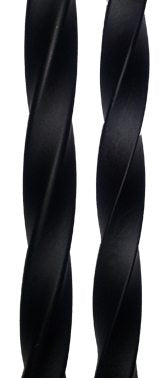Solid vs. Hollow Iron Balusters: A Comprehensive Comparison for Your Staircase
When planning your staircase project, one crucial decision to make is whether to use solid or hollow iron balusters. Each type has its unique features, benefits, and considerations, so understanding the differences between the two will help you make the best choice for your specific needs and preferences. In this comprehensive comparison, we’ll examine the characteristics of both solid and hollow iron balusters.
Solid Iron Balusters:
- Weight: Solid iron balusters are heavier, averaging around 3 pounds each. This weight contributes to their robust and sturdy feel.
- Texture: Due to the forging process, solid iron balusters have a slightly textured surface, giving them an authentic, traditional appearance.
- Edges: The edges of solid iron balusters are squarer compared to their hollow counterparts, providing a more defined and sharp look.
- Strength: Solid iron balusters meet all building code standards, ensuring the safety and durability of your staircase.
- Cutting: Cutting solid iron balusters requires a chop saw and a metal cutting blade. The process can be more time-consuming due to the heavier material.
- Shipping: The weight of solid iron balusters makes them more expensive to ship, which could impact your overall project budget.
Hollow Iron Balusters:
- Weight: Hollow iron balusters are lighter, averaging around 1.5 pounds each. This reduced weight makes them easier to handle and install.
- Texture: The machining process used to manufacture hollow iron balusters results in a smooth, polished finish.
- Edges: Hollow balusters have slightly rounder edges due to the machining process, giving them a more contemporary appearance.
- Strength: Hollow iron balusters are made from a high-grade steel that is designed to be stronger than solid balusters. They also meet all building code standards, ensuring safety and durability.
- Cutting: Hollow balusters can be cut using the same tools as solid balusters, but the process is generally faster and easier due to their lighter weight.
- Shipping: Hollow iron balusters are cheaper to ship, saving you money on your overall project costs.
In conclusion, the choice between solid and hollow iron balusters comes down to personal preference, project requirements, and budget. Both types offer strength, meet building code standards, and provide unique aesthetic qualities. By carefully considering the differences between solid and hollow iron balusters, you can make an informed decision that best suits your staircase project.

Hollow on Left – Solid on Right
Solid vs Hollow Summary
Both balusters look virtually the same once installed. Hollow balusters are cheaper to ship, easier to handle and cut and install the same. Hollow balusters are quickly becoming the industry standard for production home building due to the cost savings and ease of installation.
Users who opt for solid generally view solid as being higher quality, which is usually true for lower quality brands of balusters, but our brand the quality is the same either way you go.
